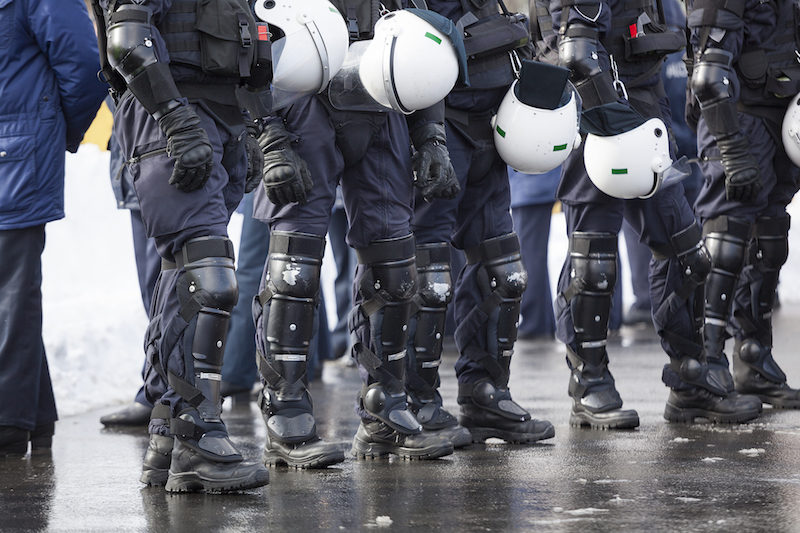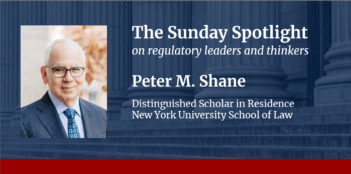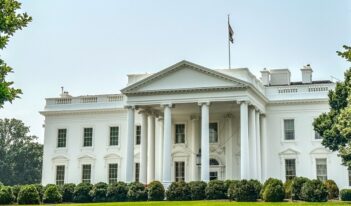
Scholar argues that policymakers should apply the substance of executive branch lethal force regulations to the police context.
The President of the United States must currently overcome greater obstacles before the military can use lethal force against a U.S. citizen overseas than a local police agency faces before using lethal force domestically. At least that is the claim Daniel Loehr of New York University School of Law makes in a forthcoming paper.
Loehr argues that the imbalance should shift in the other direction, with greater constraints placed on local police agencies’ use of deadly force than on the executive branch’s.
Authorizing statutes meaningfully limit the President’s use of lethal force by clearly articulating the circumstances under which lethal force is permitted, contends Loehr. For example, federal law “authorizes the President to use all necessary and appropriate force,” but only against nations, organizations, and persons involved in the September 11 attacks, and only “to prevent future international terrorism.”
But these limiting statutes do not exist for police agencies. Loehr views the absence of clear regulations for police agency use of force as “disturbing.” Currently, police agencies can use lethal force in situations that begin with a minor traffic violation but escalate to a high-speed car chase, says Loehr.
Loehr argues that Congress should impose more constraints on police agencies in the same way Congress constrains the President. In the police context, Loehr says the law should limit police to using lethal force only when responding to serious crimes.
Another method of regulation that Loehr argues police agencies should improve—and the President already uses well—is internal policy. Loehr believes that internal policy is important because police agencies and the military best understand the threats they confront. Loehr explains that both groups should promote tactics in their internal policies to de-escalate situations in which lethal force would more likely be used.
The White House has established an internal policy on the use of force in counterterrorism operations outside the United States that goes beyond the criminal and constitutional limitations on lethal force, argues Loehr. According to Loehr, the White House’s internal policy provides additional limitations, including a requirement that the President consider non-violent and non-lethal force before escalation. The policy requires that the President conclude that “no other reasonable alternatives exist” to thwart the threat before using lethal force. The policy also states that the threat must be “continued and imminent” and that labeling a target as a terrorist is not enough to satisfy the imminence standard.
Loehr recommends that police agencies establish comparable internal policies with minimum force and strict imminence requirements. In the police agency context, however, Loehr adds another suggestion: that police agencies should make their internal policies publicly accessible to promote “transparency and accountability.” He explains that in the White House context, most documents—and specifically the internal policy on use of force in counterterrorism operations—are already publicly accessible.
Finally, the President must currently consider international law’s “four fundamental principles that are inherent to all targeting decisions”—“military necessity, humanity, proportionality, and distinction.” The humanity and proportionality factors add an extra layer of protection to the Fourth Amendment’s requirement that government searches and seizures be “reasonable.” Loehr asserts that this “reasonableness test” alone is vague and minimally protective because it only requires a balancing of “the totality of circumstances.”
The proportionality factor, according to Loehr, is stronger than the reasonableness bar because it articulates a clear cost-benefit analysis that is absent from the Fourth Amendment. To satisfy the proportionality factor, the President must balance the “concrete and direct military advantage with the expected incidental loss of civilian life, injury to civilians, damage to civilian objects, or a combination thereof.” Similarly, the humanity principle requires the President to ensure that “the use of weapons will not inflict unnecessary suffering,” which the Fourth Amendment does not—at least not directly—require police departments or the President to consider, says Loehr.
Although international law does not apply to domestic police officers, Loehr suggests that police departments adopt the substance of these international law factors into their internal policies—specifically including the potential harm to bystanders as well as the minimum suffering requirements.
Constitutional and criminal law are not enough to regulate the police or the President properly, Loehr argues. The U.S. Supreme Court has refused to incorporate specific lethal force requirements into the Fourth Amendment, and instead only requires a balancing of “the totality of circumstances.” Loehr contends the Fourth Amendment’s balancing test—which is only applied by the courts after police agencies or President use lethal force—does not provide any meaningful protections to citizens.
Moreover, in the police agency context, a prosecutor can only bring a criminal case against a police officer if that officer violated an individual’s constitutional rights. Criminal law does not add any requirements or constraints on lethal force for police, only additional liability after the fact.
Congress expects criminal and constitutional law to restrain police action more effectively than the President’s actions abroad, which is why, Loehr hypothesizes, Congress and the White House created additional regulations for the President.
Still, Loehr maintains that Congress and police agencies must create additional regulations to meaningfully limit police use of force.



